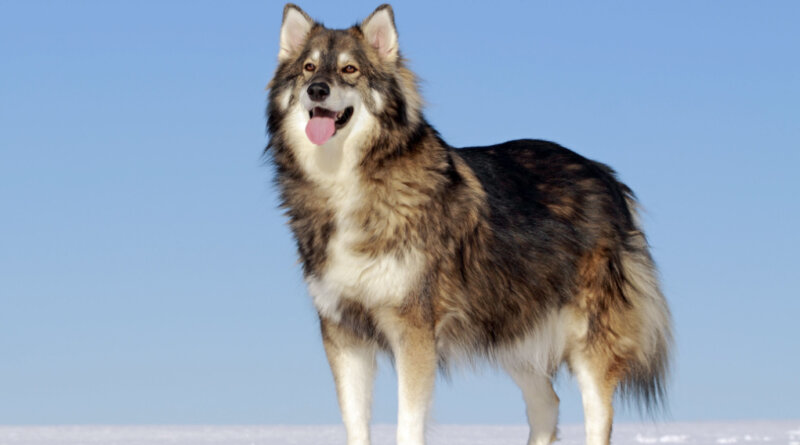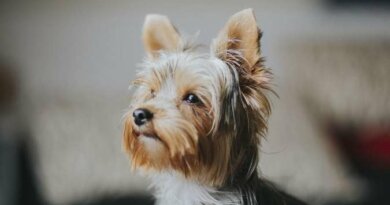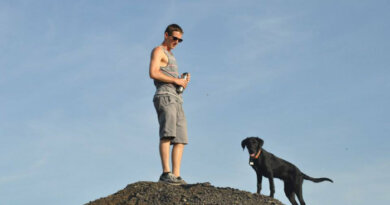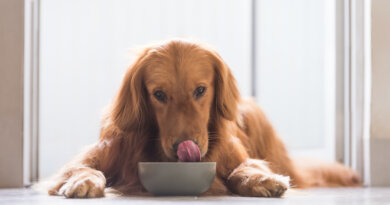Utonagan Dog Breed Profile (Alaskan Malamute, Husky & German Shepherd Mix) – Top Dog Tips
Let me tell you something.
This dog breed has got to be the most interesting canine profile I’ve ever bumped into.
What’s the catch?
Well, a lot of mystery is clouding this controversial dog breed:
(1) They’re believed to be inexistent today.
(2) No one seems to know the reason why.
And besides their wolf-like appearance, you’ll be surprised by the gentle personality of our newest canine feature today — the Utonagan dog.
Okay, just a little spoiler:
The Utonagan name actually means spirit of the wolf, which was coined by the Chinook Indian tribe.
Don’t worry. I’ve compiled all the interesting deets you need to know about this head-turning pooch.
Let’s get right into it, shall we?
Utonagan Dog Breed Profile: A Quick Glance
What is a Utonagan dog?
The Utonagan dog is a large canine breed from 3 parent DNAs — the Alaskan Malamute, Siberian Husky, and German Shepherd.
It is a relatively new mix dog breed that’s known to be a wolf look-a-like and often mistaken for the following:
- Tamaskan dog
- British Timber dog
- Northern or British Inuit dog
Trivia: The Tamaskan, Northern or British Inuit, and Timber dog actually come from the same lineage of this mixed breed.
Don’t worry. Your confusion is valid.
For more Utonagan fast facts, here’s a quick summary below:
| Weight | 65 to 100 pounds |
| Height | 23 to 30 inches |
| Lifespan | 9 to 12 years |
| Coat Length | Medium to long |
| Texture & Density | Thick, double coat with smooth outer and inner coats |
| Color | Gray, Black, White, Tan, Beige |
| Pattern | Mixed |
| Preferred Temperature | Low or cold |
| Suitable Owner Profile | Experienced or active dog owners |
| Dog Breed Group | Mixed |
Are Utonagan Dogs Rare?
Utonagan dogs are considered to be rare canine breeds.
As of this writing, the American Kennel Club (AKC) has not yet recognized this multi-mix dog breed.
The rarity of this mixed breed can also be associated with breeders no longer producing one due to inborn health issues.
And unfortunately, it has come to a point where some rescue shelters don’t even recognize this breed.
Physical Traits of the Utonagan Dog
One prominent physical feature you can see in the Utonagan dog is its wolf-like appearance.
Well, there’s no denying — the Utonagan dog’s Alaskan Malamute, German Shepherd, and Husky parent genes are known for it!
Resembling a wolf, this mixed breed has a well-muscled body, a long muzzle, and a thick coat.
And despite their Husky roots, the Utonagan dog doesn’t typically inherit its parent’s blue eyes.
Neither is the Husky’s prominent 2 varying eye colors known as heterochromia.
Instead, the Utonagan dog has almond-shaped eyes, which can have a wither amber, yellow, or shades of brown color.
Lastly, this multi-mix dog breed has a thick furry tail that’s set high during movements.
Living Conditions and Lifestyle of the Utonagan Dog
So, what it’s really like living with a wolf dog at home?
Well, their popular and active canine parent genes should be enough to remind you:
Utonagan dogs are not couch potatoes.
And before I forget, this multi-mix dog needs a big space to roam, play, and burn their energy.
You might want to pet-proof your home and backyard, too.
I get it, but can they live with me in my apartment?
Unfortunately, Utonagan dogs are unsuitable for apartment living due to their large size, physical needs, and high prey drive.
You might as well keep your wolf dogs away from livestock, too.
They can easily regard your farm friends as nuisances and chase them anytime.
Can Utonagan Dogs Be Left Alone?
Utonagan dogs shouldn’t be left alone for long periods.
Due to their affectionate nature and strong attachment to their owners, leaving them alone at home can trigger destructive tendencies.
They may look like badass wolves, but they’re soft-hearted, too.
So, if you’re working or running daily errands, be sure to have somebody dog-sit your wolf dog at home.
Preferably a familiar face or a family member, your dogsitter needs to keep your multi-mix dog entertained with interactive toys as well.
Remember: They need mental stimulation, too.
The Utonagan Dog Personality
With the Alaskan Malamute, German Shepherd, and Siberian Husky DNA combined, there’s no question why Utonagan dogs are strong-willed and independent.
Don’t fret just yet.
This wolf dog isn’t really an aggressive pooch.
Although unsuitable for first-time dog owners, patience, love, time, and commitment should do the trick.
Don’t forget the treats, hooman!
So, if you’re an experienced dog owner or would like to give your best shot dealing with Utonagan dogs, then the following data can help you.
|
Traits You’ll Love |
Traits to Watch Out For |
| Very affectionate and loving | Strong prey drive |
| Can be a gentle playmate | Can’t be left alone |
| Not totally aggressive | Needs active owners |
| Easy to train | Only suitable for cold temperatures |
With proper and early exposure to training and socialization, Utonagan dogs make great home companions for you and your family.
Are Utonagan Dogs Great Family Pets?
Utonagan dogs are great family pets because of their affectionate and loyal nature. They’re great watchdogs, too.
And with regular physical and mental stimulation, this multi-mix dog won’t be a pain in the bum.
While this is a must for their health, daily exercises help prevent your wolf dogs from boredom, which sometimes leads to aggression.
Are Utonagan Dogs Great Pets for Kids?
Utonagan dogs are great pets for kids, not only as a loving companion but as a protective watchdog, too.
However, this wolf-like dog can be wary around strangers or kids if not socially trained early.
So, bear this in mind and be sure to supervise your kids, especially visitors at home.
Are Utonagan Dogs Great Around Other Pets?
Utonagan dogs are great around other pets and animals because of their gentle nature.
But just like any other dog breed, befriending this wolf-dog can be quite tricky.
Unless properly trained at a young age and exposed to suitable living conditions, Utonagan dogs are friendly pets.
Do Utonagan Dogs Bark a Lot?
Utonagan dogs tend to have above-moderate barking tendencies due to their protective nature, especially in times of threat and danger.
And taking from their Siberian Husky roots, these multi-mix pups can be noisy pals at home.
But with proper training and stimulation, it’s something you can definitely handle.
Are Utonagan Dogs Hard to Train?
Utonagan dogs are easily trainable, especially with early intervention.
While training this multi-mix dog can be a breeze for experienced owners, Utonagan dogs aren’t suitable for newbie pup parents.
Given their stubborn parent breeds, training this wolf-dog at home needs constant routine and patience.
And without your help, Utonagan dogs can be quite challenging to deal with.
Utonagan Dog Breed: Grooming, Diet, and Health
Grooming a Wolf-like Dog
The Utonagan dog is known to be cold-tolerant — thanks to their thick, dense coat.
But especially when seasons change, you’ll notice your sofa full of hair!
So, this multi-mix dog needs brushing at least twice a week to keep them clean and (your living room) tidy.
Tip: You can brush your Utonagan dogs outside the house if you want to reduce hair and dander in your living room.
But be sure to let your Utonagans get used to this routine at the earliest time possible.
RELATED: 8 Best Mixed-Breed Hypoallergenic Dogs
Bathing, Ear, and Nail Cleaning
Bathe your wolf dogs when necessary.
Note: Frequent bathing can strip or dry out your dog’s natural oils.
And since most dog shampoos boast flea-repelling properties, their formula can be harsh for your Fido’s skin and coat over time.
As for ear cleaning, this should be done weekly to monitor any wax buildup or signs of infection.
Meanwhile, trim your pooch’s nails regularly, too.
Your dogs can grow their nails pretty quickly once a month or when necessary due to their activity level.
Diet
As a general rule of thumb, feeding your dogs must be proportionate to their size.
So, for your Utonagan dogs at home, be sure not to overfeed them to avoid obesity-related diseases.
Much better if you seek your vet’s advice on what type of diet they need.
Your vets will balance their daily food requirements to the following criteria:
- Weight
- Energy level
- Medical history
Also, be sure to slow down on giving your beloved furballs some treats.
Or, for a healthier approach, you can give fruit and veggie slices to your wolf dogs occasionally.
Health
The Utonagan dog can live a long, healthy life with a proper diet and adequate living conditions.
But since hybrid dogs can inherit their parent’s genetic illnesses, it’s best to take note of the following conditions for your awareness:
Canine Hip Dysplasia
Also known as CHD, canine hip dysplasia is a bone disorder in dogs that targets the ball and socket joint in the hip.
While CHD is common in small dogs, the Utonagan dog is also vulnerable to this condition.
The following factors commonly cause this skeletal disorder:
- Lack of exercise
- Improper nutrition
- Bone formation process
If you want to be sure if you suspect CHD in your wolf dogs, then watch out for the following symptoms:
- Limping
- Weakness
- Hind leg pain
- Difficulty moving
Meanwhile, veterinary experts make continuous efforts to look for treatments for CHD.
But, the following are known to relieve joint pain in dogs with CHD according to a study:
- Fish oil
- Green-lipped mussels
- Nonsteroidal anti-inflammatory drugs
- Polysulfated glycosaminoglycan supplements
Note: Numerous studies confirm that maintaining a healthy body weight helps prevent or delay hip dysplasia in dogs.
Addison’s Disease
Named after the physician Thomas Addison, this canine disease is found to be more common in dogs than in humans.
Referred to as Addison’s disease, this canine condition affects the adrenal glands that produce the following hormones:
- Cortisol – helps dogs deal with stress
- Aldosterone – helps regulate electrolyte and water levels in the body
When the adrenal glands fail to produce hormones (Primary Addison’s disease), your Fidos can also get diagnosed with the secondary type.
Or when your dog’s pituitary gland doesn’t produce enough ACTH hormone, which controls the production of another hormone — cortisol.
Although occurring with unknown causes, experts believe that the following factors cause Addison’s disease:
- Hemorrhage
- Metastatic tumor
- Certain medications
- Adrenal gland damage
If you suspect Addison’s disease in your dogs, watch out for the following symptoms:
If, in unfortunate cases, your dog is diagnosed with Addison’s disease, your vet may perform the following treatments:
- Steroid prednisone
- Injectable mineralocorticoid
- Mineralocorticoid supplementation
Note: Addison’s disease is incurable. Once diagnosed, your dogs may go on lifetime therapy.
Sadly, there are also no preventive measures for your pups, too.
The Utonagan Dog: A Glimpse of the Past
Where did the Utonagan dog come from?
The Utonagan dog originated in England and was developed by Edwina Harrison in 1987.
Despite being bred to look like wolves, Utonagan dogs don’t have any strands of wolf DNA in them.
Interestingly, it took 5 rescue dog breeds to come up with a pup that resembles a wolf.
And mysteriously, no one knows the origins and details of these 5 canine prototypes.
So, Harrison bred the first Utonagan dogs with the following 3 wolf-like canine breeds, too:
Thus, the birth of the canine term wolf dog.
Trivia: The Utonagan dogs were loyal companions of the Chinook Indian tribe.
Meanwhile, let’s take a look at the wolf dog’s parent breed history below:
Brief History of the Utonagan’s Parent Breeds
|
Details |
Alaskan Malamute | Siberian Husky |
German Shepherd |
| Origin | Alaska | Siberia | Germany |
| Year | Over 4,000 years ago | Over 4,000 years ago | 1800s |
| Bred as | Working, sled dog | Working, sled dog | Working, police dog |
| Significant deets | One of the oldest canine breeds in the world; historically used in Arctic expeditions | Used by the US Army during World War II to rescue pilots in the Arctic | Popularized during World War I |
Similarities and Differences Between the Utonagan’s Parent Breeds
|
Characteristics |
Alaskan Malamute | Siberian Husky |
German Shepherd |
| Energy Level | High | High | High |
| Activity Requirement | High | High | High |
| Drooling | No | No | No |
| Shedding | Above moderate | Medium | Above moderate |
| Cold Tolerance | High | High | Above moderate |
| Heat Tolerance | Low | Medium | Above moderate |
| Affection Towards Owner | Moderate | Very affectionate | Above moderate |
| Temperament with Kids | Needs supervision | Above moderate | Friendly |
| Friendliness to Strangers | Moderate | Above moderate | Moderate |
| Compatibility with Other Dogs | Low | Above moderate | Moderate |
| Compatibility with Other Pets | Low | Above moderate | Moderate |
| Trainability | Moderate | Very stubborn | High |
| Noisiness | Above moderate | High | Moderate |
Utonagan Dog Breed: Before You Go…
Never heard of multi-mix dog breeds?
Well, it’s amazing to know how science can create such an amazing pooch called the Utonagan dog, isn’t it?
Personally, I’m so fascinated with this canine breed.
Not only because of their wolf-like appearance but the big mystery that covers this immaculate dog.
Which fact intrigues you the most? Be sure to let us know in the comments.
So, if you enjoyed this blog today, you’ll definitely love other mixed dog breeds below!
RELATED ARTICLES:







